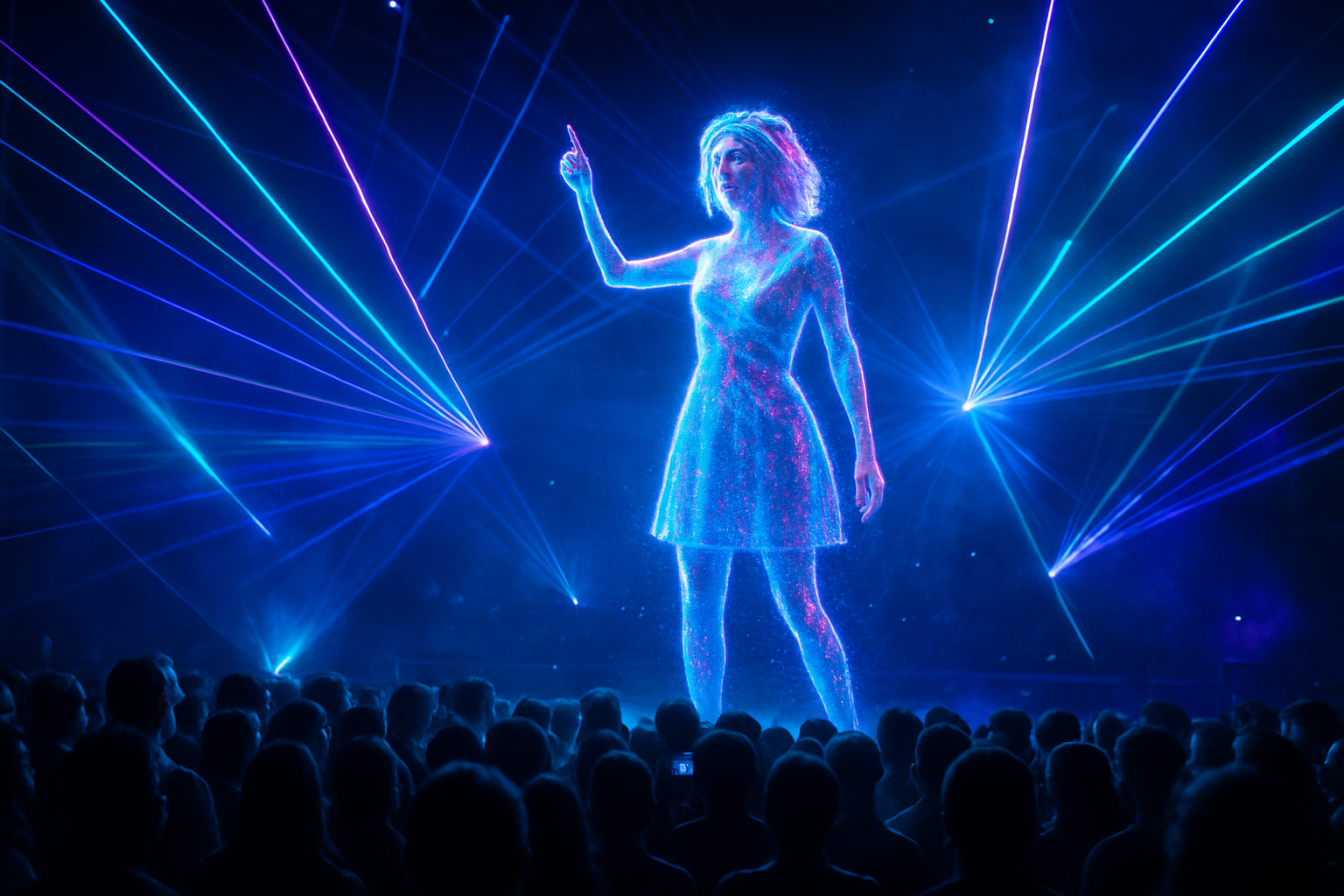Holographic Performances: Redefining Live Entertainment
In the ever-evolving landscape of live entertainment, a groundbreaking technology is reshaping the way we experience concerts, theater, and beyond. Holographic performances, once confined to the realm of science fiction, have emerged as a transformative force in the arts and entertainment industry. This cutting-edge fusion of advanced projection techniques and live event production is not only revolutionizing the concept of live shows but also challenging our perceptions of presence and reality. As holographic technology continues to advance, it opens up unprecedented possibilities for creative expression, audience engagement, and the preservation of artistic legacies.

Technological Advancements Driving the Trend
The rapid evolution of holographic technology has been fueled by advancements in projection systems, computer-generated imagery, and real-time rendering capabilities. Modern holographic performances utilize a combination of high-resolution projectors, specialized screens, and sophisticated software to create lifelike three-dimensional images that can interact with live performers and audiences. Recent innovations in laser projection and AI-driven motion capture have further enhanced the realism and responsiveness of holographic figures, blurring the lines between virtual and physical presence.
Reimagining Concerts and Live Music
The music industry has been at the forefront of adopting holographic technology, with a growing number of artists and promoters embracing this innovative medium. Holographic concerts have allowed fans to experience performances by deceased music icons, such as Whitney Houston and Roy Orbison, breathing new life into their legacies. Additionally, living artists are exploring holographic technology to expand their reach, performing simultaneously in multiple venues or creating elaborate visual spectacles that transcend the limitations of traditional stage design.
Theatrical Productions and Immersive Storytelling
Beyond music, holographic technology is finding its way into theatrical productions, offering directors and set designers unprecedented creative freedom. Holographic projections can transform stage environments instantly, create ethereal characters, or bring historical figures to life with startling realism. This technology enables immersive storytelling experiences that merge the physical and digital realms, allowing audiences to step into fantastical worlds or interact with virtual narratives in ways previously unimaginable.
Educational and Cultural Applications
The potential of holographic performances extends far beyond entertainment, with significant implications for education and cultural preservation. Museums and educational institutions are exploring holographic displays to bring historical events and figures to life, offering immersive learning experiences that engage and inspire. Additionally, holographic technology presents a novel way to document and preserve cultural heritage, allowing future generations to experience traditional performances and rituals with unprecedented fidelity.
Ethical Considerations and Artistic Integrity
As holographic performances become more prevalent, they raise important ethical questions about artistic representation and consent. The use of deceased artists’ likenesses, in particular, has sparked debates about posthumous rights and the authenticity of such performances. Industry professionals and legal experts are grappling with these issues, working to establish guidelines that respect artistic legacies while embracing technological innovation.
The Future of Holographic Entertainment
Looking ahead, the potential for holographic performances seems boundless. As technology continues to advance, we can anticipate even more realistic and interactive holographic experiences. The integration of augmented reality and haptic feedback could further blur the lines between virtual and physical presence, creating truly immersive multi-sensory performances. Moreover, as 5G networks and cloud computing capabilities expand, we may see the rise of distributed holographic performances, allowing audiences worldwide to share in live experiences simultaneously.
In conclusion, holographic performances represent a paradigm shift in the arts and entertainment industry, offering new avenues for creative expression and audience engagement. As this technology matures, it promises to redefine our understanding of live entertainment, pushing the boundaries of what is possible in performance art. While challenges remain, particularly in terms of ethical considerations and technological refinement, the transformative potential of holographic entertainment is undeniable. As we stand on the cusp of this new era, one thing is clear: the future of live performance will be shaped by the ethereal glow of holograms, bridging the gap between imagination and reality in ways we are only beginning to explore.





